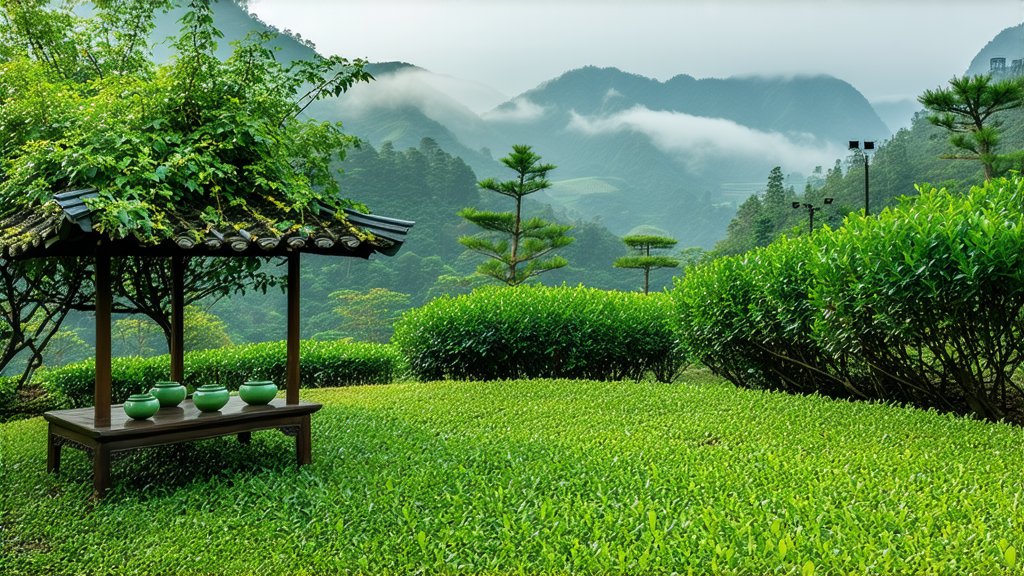
Longjing tea, also known as West Lake Dragon Well tea, stands as one of China's most esteemed and celebrated green teas. Its name translates to "Dragon Well," referencing the legendary spring from which it draws its name and part of its unparalleled quality. This article delves into the rich history, diverse varieties, intricate craftsmanship, and sophisticated art of appreciating Longjing tea, offering international readers a comprehensive understanding of this quintessential Chinese tea.
Historical Background
Longjing tea's origins trace back to the Tang Dynasty (618-907 AD), but its prominence flourished during the Qing Dynasty when Emperor Kangxi was said to have bestowed upon it the imperial title after tasting its exquisite flavor. Nestled in the picturesque West Lake region of Hangzhou, Zhejiang Province, Longjing tea benefits from an ideal climate characterized by abundant rainfall, misty conditions, and fertile soil, all contributing to its unique character.
Varieties of Longjing Tea
While Longjing is primarily recognized for its classic pan-fired style, there are subtle variations based on elevation, cultivar, and processing techniques. These include:
- Lion Peak Longjing: Harvested before Qingming Festival (Tomb-Sweeping Day), it is considered the highest quality due to its tender leaves and vibrant flavor profile.
- Meijiawu Longjing: Grown in the Meijiawu village area, known for its slightly fuller body compared to Lion Peak but still maintaining exceptional freshness and aroma.
- Xihu Longjing: Produced around West Lake, this variety embodies the essence of the region, with a balance of sweetness and umami notes.
Each variety offers a distinct interpretation of Longjing's signature characteristics, inviting enthusiasts to explore the nuances between them.
The Art of Crafting Longjing Tea
The meticulous process of making Longjing tea is an art form that combines tradition and precision. Here's a glimpse into its creation:
- Picking: Only the youngest shoots and leaves, typically the bud and the first two leaves, are selected during the early spring harvest. This ensures maximum tenderness and nutritional value.
- Withering: Freshly picked leaves undergo a brief wilting process to soften their structure and initiate enzymatic activity.
- Fixation: Unlike other green teas that may be steamed or oven-dried, Longjing is uniquely pan-fired at high temperatures. This step halts oxidation while imparting a distinctive roasted aroma and taste.
- Shaping: Skilled artisans hand-roll the leaves in a hot wok, creating the tea's characteristic flat shape reminiscent of a spearhead. This not only enhances aesthetics but also affects the brewing experience.
- Drying: Final drying removes any remaining moisture, preserving the tea's crispness and extending shelf life without compromising flavor.
Appreciating Longjing Tea: A Sensory Journey
To truly appreciate Longjing tea, one must engage all senses in a ritualistic manner akin to a meditative practice. Here’s how to embark on this sensory journey:
- Visual Examination: Observe the dry leaves for their emerald hue and slender, flattened appearance. Upon infusion, watch them unfurl gracefully, revealing a bright yellow-green liquor.
- Aromatic Exploration: Inhale deeply before sipping to detect the tea's vegetal freshness intertwined with subtle toasty undertones from the pan-firing process.
- Tasting: Take small sips, allowing the tea to coat your palate fully. Notice the initial sweetness followed by a complex interplay of vegetal flavors, umami richness, and a clean, slightly astringent finish.
- Texture: Pay attention to the silky mouthfeel, a testament to the high-quality young leaves used.
- Aftertaste: Savor the lingering aftertaste that reflects the tea's purity and craftsmanship.
In conclusion, Longjing tea encapsulates not just a beverage but a profound cultural heritage and artistic expression deeply rooted in Chinese soil. From its storied past to its meticulous production and refined consumption, it represents the pinnacle of Chinese green tea artistry. For those seeking a deeper connection with tea culture, exploring Longjing is an invitation to embark on a journey through time, taste, and tradition.